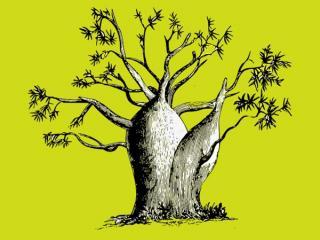Baobab Group
Members

Doctorante
INRIA

Doctorant
UCBL

Ingénieur de recherche
INRIA
Tel: 04 72 44 81 42

Maître de conférences
UCBL
Tel: 33 04 72 43 15 52

Maître de conférences
UCBL
Tel: 04 72 43 15 52
Technicienne
INRIA
Tel: 04 72 44 81 54

Professeur des universités
UCBL
Tel: 04 72 44 81 42

Directrice de recherche
INRIA
Tel: 33 04 72 44 82 38

Doctorante
UCBL

Baobab is a French research team of the Laboratoire de Biométrie et Biologie Évolutive, and at the same time represents the core of a European research team of Inria called Erable. Besides the members of Baobab, Erable has thus members in three institutions in Italy (Sapienza University of Rome, Luiss University, and University of Pisa) and two institutions in the Netherlands (CWI and Free University of Amsterdam).
Baobab has two main sets of research goals that currently cover four axes:
-
Goals:
-
The first is related to the original areas of expertise of the team, namely combinatorial and statistical modelling and algorithms, although more recently the team has also been joined by members that come from biology including experimental.
-
The second set of goals concern its main Life Science interest which is to better understand interactions between living systems and their environment. This includes close and often persistent interactions between two living systems (symbiosis), interactions between living systems and viruses, and interactions between living systems and chemical compounds.
-
-
Axes:
-
(pan)genomics and transcriptomics in general,
-
metabolism and (post)transcriptional regulation,
-
(co)evolution
-
health in general, of living systems and environmental.
-
A longer objective of the team is to become able in some cases to suggest the means of controlling for or of re-establishing equilibrium in an interacting community by acting on its environment or on its players, how they play and who plays.
Two major steps are constantly involved in the research done by the team: a first one of modelling (i.e. translating) a Life Science problem into a mathematical one, and a second of algorithm analysis and design. The algorithms developed are then applied to the questions of interest in Life Science using data from the literature or from collaborators. More recently, thanks to the recruitment of young researchers (PhD students and postdocs) in biology, the team has become able to start doing experiments and producing data or validating some of the results obtained on its own.
From a methodological point of view, the main characteristic of the team is to consider that, once a model is selected, the algorithms to explore such model should, whenever possible, be exact in the answer provided as well as exhaustive when more than one exists for a more accurate interpretation of the results. More recently, the team has become interested in exploring the interface between exact algorithms on one hand, and probabilistic or statistical ones on the other such as used in machine learning approaches. More in particular, the team is interested in investigating an area of research called “interpretable machine learning” that has been developing more recently and its potential relations with exact, combinatorial approaches.
Besides being at the core of a European team, Baobab has a number of other collaborations at the international level.
Baobab is also strongly involved in teaching at the University of Lyon and Insa-Lyon, well as in other research institutions in Europe, directly or through the members of Erable that are not in France.
For more information, you may also visit the site of the Inria team Erable here: http://team.inria.fr/erable/en/.
Publications
Display of 241 to 270 publications on 309 in total
Efficient learning of Bayesian network classifiers:An extension to the TAN classifie
20th Australian Joint Conference on Artificial Intelligence . 4830 : 16-25
Conference paper
see the publicationThe solution space of sorting by reversals
3rd International Symposium on Bioinformatics Research and Applications (ISBRA 2007) . 4463 : 293-304
Conference paper
see the publicationEvolution under Reversals: Parsimony and Conservation of Common Intervals
IEEE/ACM Transactions on Computational Biology and Bioinformatics . 4 : 301-309
Journal article
see the publicationRegulation of expression following nutritional stresses in the reduced genome of Buchnera aphidicola, "Is there any life left?
Seminarios del Institut Cavanilles de Biodiversitat i Biologia Evolutiva (ICBiBE) - Univ. Valencia (ESP) . : 1-1
Conference paper
see the publicationMetabolic network visualization eliminating node redundance and preserving metabolic pathways
BMC Biology . 1 - n°29 : 1-19
Journal article
see the publicationAdvances on sorting by reversals
Discrete Applied Mathematics . 155 : 881-888
Journal article
see the publicationRepetition-free longest common subsequence
IV Latin-American Algorithms, Graphs and Optimization Symposium (LAGOS) . 30 : 243-248
Conference paper
see the publicationThe maximum agreement forest problem: Approximation algorithms and computational experiments
Theoretical Computer Science . 374 : 91-110
Journal article
see the publicationEnumerating precursor sets of target metabolites in a metabolic network
8th Workshop on Algorithms in Bioinformatics (WABI) . 5251 : 233-244
Conference paper
see the publicationRecherche de précurseurs dans un réseau métabolique
Réseaux d'interaction : analyse, modélisation et simulation (RIAMS) . : 1-1
Conference paper
see the publicationAll Maximal Pairs in Step-Leap Representation of Melodic Sequences
Information Sciences . 177 ( 9 ) : 1954-1962
Journal article
see the publicationSymBioCyc: Metabolic data on endosymbiotic, parasitic and free bacteria
Integrative Post-Genomics - IPG'07 . : 1-1
Conference paper
see the publicationMycotoxin fumonisin B-1 selectively down-regulates the basal IL-8 expression in pig intestine: in vivo and in vitro studies
Food and Chemical Toxicology . 44 ( 10 ) : 1768-1773
Journal article
see the publicationUncovering structure in biological networks
incollection . -- : 471-483
Journal article
see the publicationMotif search in graphs: application to metabolic networks.
IEEE/ACM Transactions on Computational Biology and Bioinformatics . 3 - n°4 : 360-368
Journal article
see the publicationLongest Repeats with a Block of k Don't Cares
Theoretical Computer Science . 362 ( 1-3 ) : 248-254
Journal article
see the publicationRISOTTO: Fast extraction of motifs with mismatches
Latin American Symposium on Theoretical Informatics . 3887 : 757-768
DOI: 10.1007/11682462_69
Conference paper
see the publicationThe Gapped-Factor Tree
Prague Stringology Conference 2006 . : 182--196
Conference paper
see the publicationAn efficient algorithm for the identification of structured motifs in DNA promoter sequences
IEEE/ACM Transactions on Computational Biology and Bioinformatics . 3 : 126-140
Journal article
see the publicationMetabolic network visualization using constraint planar graph drawing Algorithm
Metabolic network visualization using constraint planar graph drawing Algorithm . : 489 - 496
Conference paper
see the publicationMetabolic network visualization using constraint planar graph drawing algorithm
incollection . -- : 489-496
Journal article
see the publicationUn Algorithme Contraint de Dessin de Graphe Planaire pour la Visualisation de Réseaux Métaboliques
Un Algorithme Contraint de Dessin de Graphe Planaire pour la Visualisation de Réseaux Métaboliques . : électronique
Conference paper
see the publicationLossless Filter for Finding Long Multiple Approximate Repetitions Using a New Data Structure, the Bi-factor Array
String Processing and Information Retrieval, 12th International Conference, SPIRE 2005 . 3772 : 179-190
DOI: 10.1007/11575832
Conference paper
see the publicationA Comparative Study of Bases for Motif Inference
String Algorithmics . : 195-225
Conference paper
see the publicationA Pattern Extraction Algorithm for Abstract Melodic Representations that Allow Partial Overlapping of Intervallic Categories
Proceedings of the 6th International Conference on Music Information Retrieval (ISMIR 2005) . : 167-174
Conference paper
see the publicationA Multiple Graph Layers Model with Application to RNA Secondary Structures Comparison
String Processing and Information Retrieval 2005 (SPIRE 2005) . 3772 : 348--359
DOI: 10.1007/11575832_39
Conference paper
see the publication